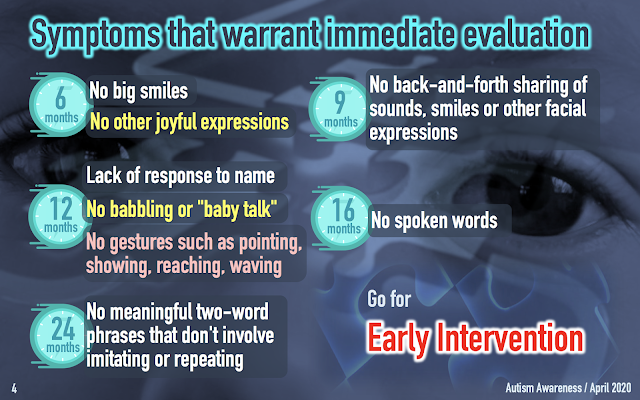
Living with an autistic child puts additional pressures on families. Pressures on all fronts. In India all disabilities / impairments were classified into one single “disabled” category. Managing developmental and intellectual disabilities is a completely different ballgame, compared to disabilities such as visually impaired, hearing impaired of physical disabilities. Based on work done by many NGOs and parent associations, Government of India has come up with many provisions for helping persons with Autism. In today’s poster, I am touching up on what all suppprts available from the state for Autism, in today’s autism awareness poster.
For the first time in India, in 2016, a medical board constituted by the government, which would use scientifically developed tools to identify autism cases and give autism disability certificates. So far, all certificate carried only “Mental Retardation”, for all developmental and intellectual disabilities.
Unique Disability ID (UDID): "Unique ID for Persons with Disabilities” project is being implemented with a view of creating a National Database for PwDs, and to issue a Unique Disability Identity Card to each person with disabilities. The project will not only encourage transparency, efficiency and ease of delivering the government benefits to the person with disabilities, but also ensure uniformity.
In accordance with The Constitution of India, and Rights of Persons with Disability Act 2016, there are several government schemes and programmes that can be availed by a person with disability in India. To avail all the schemes mentioned below it is mandatory to have a disability certificate. Though currently there is no disability certificate being issued just for autism, people who want to avail any schemes can opt to take the disability certificate for Autism with MR (Mental Retardation). Though my daughter is autistic, her disability certificate reads “Mental Retardation”, a term which has a very negative connotation.
The National Trust for Welfare of Persons with Autism, Cerebral Palsy, Mental Retardation and Multiple Disabilities was constituted by the Central Government as a legal entity in the year 2000. The objectives of the Trust is to enable and empower persons with disability, facilitate support to registered organisations, deal with problems of disabled persons who do not have family support, promote measures for their care and protection in the event of loss of parents and guardians, evolve a procedure for appointment of guardians and trustees so that equal opportunities, protection of rights and full participation of such persons is ensured. The National Trust has several schemes and programmes available for persons with autism and their families. I believe, this is a big step, but to realise what is envisaged in the National Trust, it is a long way to go. Some basic information about some of these schemes are detailed below.
DISHA (Early Intervention and School Readiness Program): This is an early intervention and school readiness scheme for children upto 10 years.
SAMARTH (Respite Care): A scheme to provide respite home for for orphans, families in crisis, persons with disabilities from BPL, LIG families with at least one of the four disabilities covered under National Trust Act.
GHARAUNDA (Group Home And Rehabilitation Activities for Disabled Adults): In order to provide a sustainable solution to “What After Us?”, GHARAUNDA - a scheme of Lifelong Shelter & Care was conceived. GHARAUNDA seeks to provide an assured minimum quality of care services for persons with autism (and other disabilities) throughout the life at an affordable price on a sustainable basis; encourage assisted living with independence and dignity and facilitate establishment of requisite infrastructure for the assured care system throughout the country. I have no clarity of the modalities of this scheme.
Niramaya (Health Insurance Scheme): This is a unique health insurance scheme for persons with Autism, Cerebral Palsy, Mental Retardation and Multiple Disabilities. This scheme provides comprehensive cover irrespective of type of disability, without any selection or exclusion criteria of the pre-existing condition. An applicant may receive insurance cover up to Rs. 1 lakh with a single premium across age bands. The infrastructure for Niramaya scheme seems very poor. Twice we have given cheque for annual premium at a designated place (in Mumbai). There was no response at all to our many follow ups. We did not get any policy documents. The social justice departments of respective states have to ramp up a lot to make the process easier for beneficiaries. I think, Kerala Govt is the only state government, that pays premium for all the eligible persons in the state. The social justice department has an excellent framework for such support in Kerala.
VIKAAS Day Care: A day care scheme for persons with autism, cerebral palsy, mental retardation and multiple disabilities, above 10 years for enhancing interpersonal and vocational skills.
PARIVAAR – National Confederation of Parents Organisations (NCPO) was formed in the year 1995. It is a Federation of over 245 Parents Associations and Civil Societies in 31 States of India working for Persons with Intellectual and Developmental Disabilities consisting of Intellectual disability, Autism and ASD, Cerebral Palsy and Multiple Disabilities.
In addition, there are benefits such as Income Tax concessions for parents under 80U and 80DD, travel concessions in trains and buses, concessional rates in ITDC hotels etc.
The social justice departments of each state has to ramp up the infrastructure to realise the benefits envisaged in the National Trust.
Concluding this post with a quote “It’s not about fixing something or curing something. It’s about maximising potential in every human being and just reaching out and building a better community that can support everyone” - Susan Byram.




































































